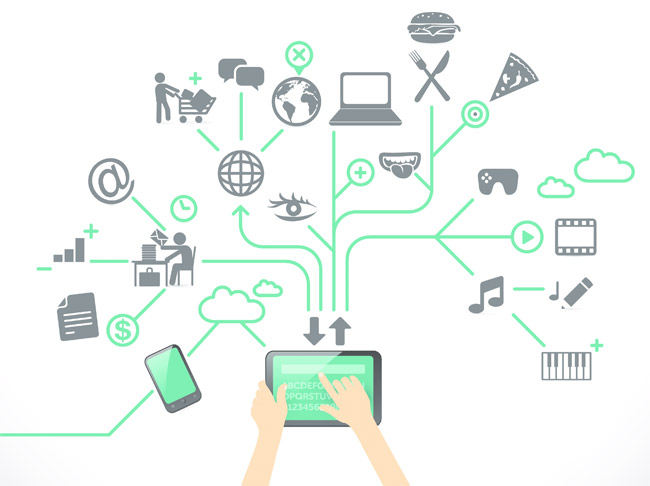Manufacturers and mobile workers are the unsung heroes of invention and innovation. Their creativity builds stronger economies in their organisations, communities and around the world, and their services keep everything moving forward. The landscape is intricate though, and it’s a constant battle to maintain profit margins, revenues and quality of service.
With the increase of devices linked to manufacturing and mobility processes comes the increase in data availability. However, much of this information is disjointed across the enterprise, making it difficult to obtain a real-time view of assets, people and transactions. When this decentralised scenario is replicated across the enterprise, with countless devices running disparately, inefficiencies continue to mount. The changing nature of technology is also disrupting value chains, forcing companies to rethink and retool nearly everything they do internally.
With the growing Internet of Things (IoT) momentum, manufacturers and service providers are catching on to the value of using IoT solutions and cloud technology to manage their processes and increase visibility within the supply chain. Implementing these solutions helps build optimised, repeatable business models as well as minimise downtime and maximise productivity—all of which are key to reaching a new level of efficiency, accuracy and quality. The Australian Logistics Council estimated that every, one per cent improvement in the productivity of our logistics sector alone equates to AU$2 billion increase in GDP[1]. With the IoT movement taking Australia by storm, Gartner predicting 25 billion connected devices by 2020[2], taking advantage of this valuable technology has never appeared more right.
Through enterprise asset intelligence from captured data, manufacturers are empowered to make informed decisions and produce more efficient and accurate performance.
As the value of technology in the manufacturing sector becomes more apparent, it is important that manufacturers jump on the trend. The following solutions are five ways manufacturers can encourage and support growth in a highly individualised and complex market.
- Increase warehouse inventory intelligence
The warehouse is the lifeline of a manufacturing enterprise, and its efficiency directly impacts the cost of doing business, level of customer service and the ability to compete. Mobile solutions and the ability to track inventory data can do wonders for performance. With these devices and an IoT solution in place, manufacturers can give their physical assets a digital voice by capturing and sharing mission-critical data across the cloud. By doing so, manufacturers can ensure they have the right goods in the right place—ready to be delivered to the right location.
This type of asset intelligence helps improve efficiency by identifying areas where operator waiting time, defects and over-stocking or production waste can be reduced. Moreover, this intelligence enables manufacturers to know where to dedicate time to improving certain processes, whether it’s related to stocking or fulfilling electronic orders to surpass customer expectations. The ability to make more informed, analytical decisions is how manufacturers drive productivity and improvement.
- Update tracking solutions for asset management
A manufacturer or service provider’s materials and assets are their bottom line. Without a direct line of sight into their location and materials handling equipment, the potential for loss, delay and delivery error is vast. With solutions integrating mobile scanning devices and passive or active RFID tags, companies can quickly track the location, motion and state of their materials and assets, allowing them to devise plans to reduce this waste.
Sharing asset data across cloud-based applications allows manufacturers to have a centralised hub that provides real-time insight into an organisation’s asset usage and needs. This helps keep the materials’ handling, labour and energy costs to a minimum and ensure manufacturers have the right materials in the right places to keep business momentum going.
- Ensure quality proofing with data
The Australian consumer market is seeing increasing customer and business demands. From quality to delivery speed, everyone wants the best. With quality applications (deployed via mobile devices), manufacturers can improve the speed and accuracy of their quality checks. The capture of quality data is then automated, ensuring that customers receive the right products every time, improving customer satisfaction and retention. The ability to identify quality issues quickly helps manufacturers minimise wasted labour, materials and equipment, contributing to efficiency.
- Adopt real time workforce management
Access to real-time information in order to make real-time decisions that impact performance, is key to a competitive manufacturer. Enterprise mobility solutions can provide this insight from anywhere, allowing them to communicate and facilitate processes no matter where they are. As a result, managers can be more productive throughout the day, with the ability to stay on the plant floor or central office as needed to ensure seamless operations but still have access to the information they need, when they need it. Armed with enterprise asset intelligence on-the-go, manufacturers will be better able to optimise their use of everyday data.
- Implement field service and sales
When it comes to delivering superior customer service, having the right route person or technician at the right place at the right time, with the right equipment is fundamental. Mobile devices alone have impacted service providers by providing a tool to better enable their service position as brand ambassadors to the end customer. With connected devices and IoT technologies, field personnel can gain actionable insights that enable them to better interact and communicate. For example, with these technologies, they can be more proactive by responding to traffic and weather conditions. This not only increases their safety but allows them to prepare for delays or take alternate routes.
Moving beyond the traditional concepts of manufacturing that Australia was founded on, such as vehicle and mining production, the digital movement is re-defining the concept of how businesses operate across different industries[3]. Enterprise asset intelligence delivered through new technology will enable manufacturers to identify inefficiencies in real time and improve returns on investment.
[1] http://www.arnnet.com.au/article/577215/nicta-launches-new-knowledge-hub/
[2] http://www.iotaustralia.org.au/2015/02/01/iot-facts-and-forecasts/gartner-predicts-big-role-for-cars-in-iots-future/
[3] http://www.businessspectator.com.au/article/2015/6/23/information-technology/australia-needs-wake-and-smell-disruption













